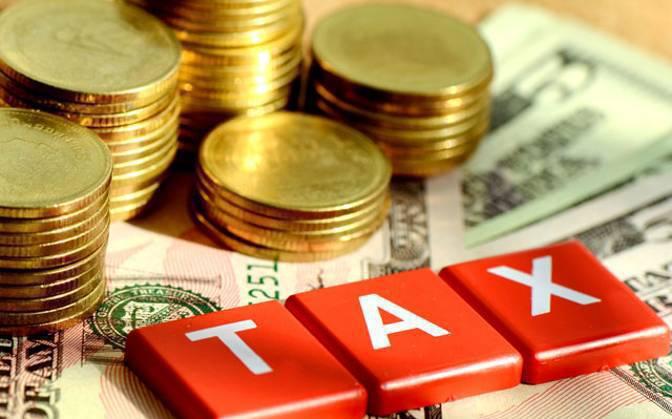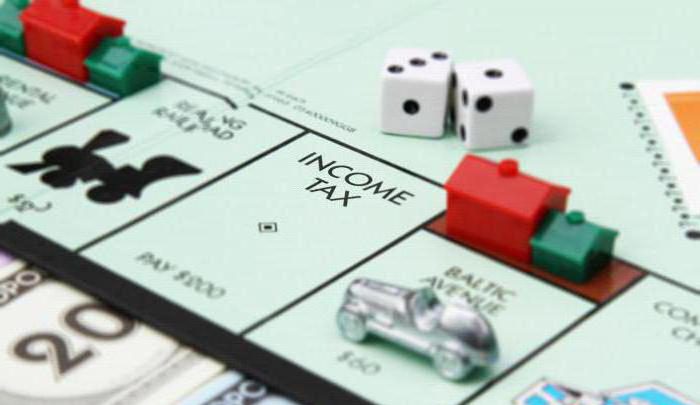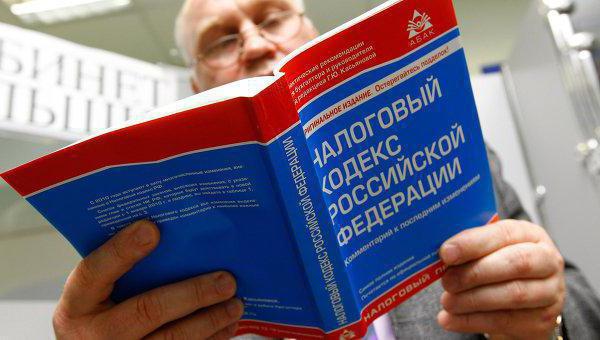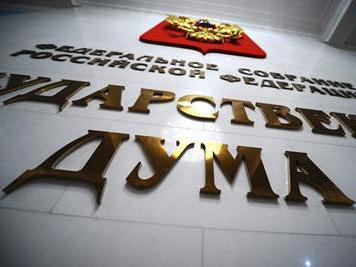Tax preferences are ... The concept, types and who is supposed to. tax incentives
Tax preferences and benefits are an integral part of the modern economy. Initially, this mechanism was conceived to activate the country's valuable industries. Now often used to support strategic enterprises.
general information
In order to successfully develop the country's economy, it is necessary to ensure the formation of an effective and adequate taxation system. To do this, you need to take care of many different components. And tax preferences are an integral part of such a system. What are they?
Tax preferences are a mechanism to reduce the burden on the activities of legal entities and individuals. There is one important aspect to note here. For many people, benefits and tax preferences are one and the same. Actually it is not. What is the difference? When a benefit is introduced, it is always subject to control and administration by the tax authorities. They must always be declared in the reporting, while preferences do not have a documentary display.
Why are preferences needed?
What it is, in general, has already been considered. Now let's talk about their practical use. Through preferences and benefits, the state can influence the processes that take place in the economy. They can be both stimulating and depressing. For example, there are benefits and preferences for modernization, reduction of environmentally harmful emissions, for the development of investment and innovation activities both in the entire economy and in individual industries. They are also sent to solve political and social problems in society.
What is the purpose of preference?
 They should be seen as opportunities for the taxpayer to reduce their tax base or the amount of money that is paid to the state. For example, in some cases, export operations are subject to a 0% value added tax. For a complete understanding, it will not be superfluous to familiarize yourself with Article 171 of the Tax Code of the Russian Federation. There is an interesting statement there that 0% is a mandatory practice. The taxpayer does not have the right to choose whether he uses this tool or not. 0% will be without exception. This situation is considered as a preference. You can additionally quote the words of A.S. Balandin. He formulated that tax preferences are the provision of benefits from the state to certain categories of taxpayers, which is expressed in the form of a reduction in the amount of payments that are mandatory. Moreover, this implies certain actions on the part of legal entities and individuals. In the example discussed above, this is the capture of foreign markets.
They should be seen as opportunities for the taxpayer to reduce their tax base or the amount of money that is paid to the state. For example, in some cases, export operations are subject to a 0% value added tax. For a complete understanding, it will not be superfluous to familiarize yourself with Article 171 of the Tax Code of the Russian Federation. There is an interesting statement there that 0% is a mandatory practice. The taxpayer does not have the right to choose whether he uses this tool or not. 0% will be without exception. This situation is considered as a preference. You can additionally quote the words of A.S. Balandin. He formulated that tax preferences are the provision of benefits from the state to certain categories of taxpayers, which is expressed in the form of a reduction in the amount of payments that are mandatory. Moreover, this implies certain actions on the part of legal entities and individuals. In the example discussed above, this is the capture of foreign markets.
What is the meaning of the tax credit?
 So, we have considered such an incentive tool as preferences, what it is, where they are used. Now let's talk about the second topic of the article. They can be viewed from two perspectives:
So, we have considered such an incentive tool as preferences, what it is, where they are used. Now let's talk about the second topic of the article. They can be viewed from two perspectives:
- as an instrument of government policy.
- as an element of taxation.
The concept of "benefit" in the legislation is described in the first article of the Tax Code of the Russian Federation. It states that they are provided to certain categories of individuals and legal entities who are entitled to them under the law. It is expressed in a reduction in the amount of the mandatory payment (or its zeroing), which must be done in favor of the state. The tax benefit should be considered as an instrument that regulates the fiscal function. It should also be noted that the definition in the Tax Code of the Russian Federation is not quite clearly formulated from a legal point of view. Because of this, there is little scope for interpretation of the concept and, possibly, for abuse. It is also viewed in a slightly different way. So, we can cite the words of the previously mentioned Barulin S.V. that tax incentives are a set of rights, obligations and ways (full or partial) to reduce the obligations of individuals and legal entities to the state, which is established by law in the form of exemptions, discounts and loans in order to regulate the economy and / or solve social problems.
Legislation for preferences
 It does not make sense to give all the regulatory documentation in full. But to give a brief explanation and indicate where the optimization of tax benefits and other preferences is stipulated at the legislative level will not be superfluous. Those who are interested will be able to familiarize themselves with the primary documents adopted by the State Duma. Attention will be paid to taxes on value added, income of individuals and profits of organizations.
It does not make sense to give all the regulatory documentation in full. But to give a brief explanation and indicate where the optimization of tax benefits and other preferences is stipulated at the legislative level will not be superfluous. Those who are interested will be able to familiarize themselves with the primary documents adopted by the State Duma. Attention will be paid to taxes on value added, income of individuals and profits of organizations.
In the first case, preferences, according to paragraphs. 9, paragraph 2, article 146 of the Tax Code of the Russian Federation, have the Russian organizers of the Olympic and Paralympic Games. It should be noted that the modern tax system provides for about 200 different benefits and preferences. Due to such a large volume, not all of them will be given, but only the most significant ones. In the case of income of individuals, prizes received by athletes during their participation in the Olympic and Paralympic Games are not taxed. This is stipulated in paragraph 20 of Article 217 of the Tax Code of the Russian Federation. In the case of corporate income tax, the preferences here are the same as in the first paragraph. That is, Russian companies involved in the Olympic and Paralympic Games. This provision is stipulated, however, by a slightly different part of the legislation, namely, paragraphs. 36 p. 1 article 251 of the Tax Code of the Russian Federation. These types of tax preferences now exist. Agree, there is an impression of a rather strong limitation.
Legislation for Tax Benefits
 Therefore, within the framework of the article, two topics are considered that are closely intertwined. Indeed, for many, tax preferences for small businesses and benefits are one and the same. Which, as we will now consider, is not entirely true. The review will be carried out in the same categories as before.
Therefore, within the framework of the article, two topics are considered that are closely intertwined. Indeed, for many, tax preferences for small businesses and benefits are one and the same. Which, as we will now consider, is not entirely true. The review will be carried out in the same categories as before.
According to paragraphs. 1-2, paragraph 3 of Article 149 of the Tax Code of the Russian Federation, goods that are produced and sold by public organizations of the disabled, and religious goods (including literature) are exempted from value added tax. Of course, these are not the only cases of relief. But let's talk about the social component for now, the commercial one will follow. According to paragraph 20 of article 217 of the Tax Code of the Russian Federation, amounts paid by religious organizations, as well as NGOs that provide services to disabled people and their medical treatment, are exempted from taxes on personal income. In the first case, there are certain doubts about the appropriateness of such a decision.
Income tax for organizations is not taken from religious communities (what a surprise) if they receive amounts for performing rituals. There are also incentives for the wages of disabled people.
Commercial tax credits
If we talk about what is widespread, then two important areas can be distinguished here:
- Simplified tax systems. In this case, we mean individual entrepreneurs, as well as legal entities whose annual turnover does not exceed a certain amount. At the same time, a lower tax rate is removed from their income (a fairly common phenomenon when they generally pay only something like a single contribution).
- Work in various technology parks and other similar organizational structures. In this case, a preferential tax regime is provided, when the size of rates (albeit not always significantly) is reduced, as well as certain bureaucratic relief.
Features of preferences
 The examples considered earlier cannot be taken as a full description of the subject of the article. Let's look at investment tax preferences. In fact, this is a benefit that provides exemption from income tax. But how is such a combination possible? The fact is that, despite the status of "tax preferences", real-life examples show that in order to receive them, you need to collect a bunch of papers. Fortunately, there is a gradual shift in this direction. So, for example, before January 1, 2009, in order to receive relief, it was necessary to conclude a contract with the Investment Committee. Targeted preferences are also now widespread. They are introduced to maintain a certain direction (for example, the sports organizations discussed above).
The examples considered earlier cannot be taken as a full description of the subject of the article. Let's look at investment tax preferences. In fact, this is a benefit that provides exemption from income tax. But how is such a combination possible? The fact is that, despite the status of "tax preferences", real-life examples show that in order to receive them, you need to collect a bunch of papers. Fortunately, there is a gradual shift in this direction. So, for example, before January 1, 2009, in order to receive relief, it was necessary to conclude a contract with the Investment Committee. Targeted preferences are also now widespread. They are introduced to maintain a certain direction (for example, the sports organizations discussed above).
Who is not entitled to preferences?
There is a list of legal entities that, subject to certain conditions, cannot qualify for concessions. This is:
- Taxpayers operating in the territory of the special economic zone. Why? The fact is that they already have territorial preferences.
- Taxpayers producing and/or selling excisable goods. These include all types of alcoholic beverages and tobacco products.
- Taxpayers working under a special tax regime (simplified system), producers of agricultural products and rural consumer cooperatives.
Conclusion
 The topic is quite interesting and clearly goes beyond the scope of the article. One could also talk about the functional preferences that are provided to those who perform certain work and tasks. It would not be superfluous to mention the exemption from scheduled inspections, which is valid from 2016 to 2018. After all, this is not a direct, but only an indirect preference, but it allows you to minimize the bureaucracy on the part of the state.
The topic is quite interesting and clearly goes beyond the scope of the article. One could also talk about the functional preferences that are provided to those who perform certain work and tasks. It would not be superfluous to mention the exemption from scheduled inspections, which is valid from 2016 to 2018. After all, this is not a direct, but only an indirect preference, but it allows you to minimize the bureaucracy on the part of the state.





